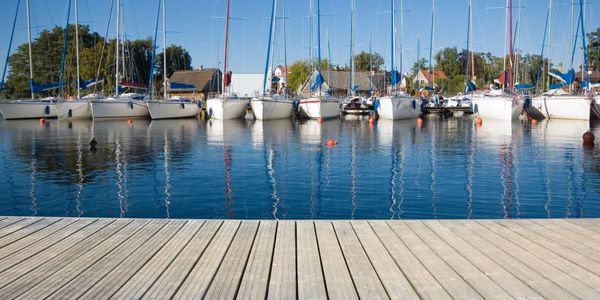Design & Engineering

DESIGN
Designing a new dock requires careful consideration of various factors, including functionality, safety, environmental impact, and aesthetics. Whether for commercial or recreational purposes, a well-designed dock can enhance waterfront areas, improve navigation, and facilitate efficient maritime operations.
- Assessing Needs and Objectives: Before embarking on the design process, it is crucial to assess the specific needs and objectives of the dock project. Determine the intended use, such as accommodating large vessels, recreational boating, or supporting commercial activities. Consider factors like expected traffic volume, accessibility, and potential future expansions.
- Functional Design: Ensure that the dock design accommodates the desired activities efficiently. Factors to consider include slip sizes, mooring configurations, access points, and adequate clearance for different vessel types. Plan for safe pedestrian access, including gangways, ramps, and appropriate lighting. Incorporate storage areas, fueling stations, and other amenities based on the dock's purpose.
- Structural Considerations: Engage with qualified engineers and architects to develop a structurally sound design that withstands various loads, including the weight of vessels, wave action, and wind forces. Consider materials that are durable, corrosion-resistant, and suitable for the marine environment. Comply with local building codes and regulations.
- Safety Measures: Safety is paramount when designing a dock. Install appropriate safety features, including life rings, fire extinguishers, and clearly marked emergency exits. Incorporate non-slip surfaces, handrails, and lighting to ensure safe movement on the dock, particularly during low light conditions.
- Environmental Sustainability: Adopt sustainable design practices to minimize the dock's ecological footprint. Consider using environmentally friendly materials, such as recycled plastic or sustainably sourced wood. Implement measures to prevent erosion, protect adjacent ecosystems, and promote water quality. Explore the use of renewable energy sources for lighting or other dock operations.
- Accessibility and Inclusivity: Design the dock to be accessible to people of all abilities. Incorporate ramps, handrails, and floating platforms to ensure ease of use for individuals with disabilities. Adhere to accessibility guidelines and standards to provide equal opportunities for everyone to enjoy the waterfront.
- Maintenance and Longevity: Consider maintenance requirements and long-term durability when selecting materials and components. Ensure easy access for inspections, repairs, and routine maintenance activities. Plan for regular maintenance to extend the dock's lifespan and avoid costly repairs or replacements.
Designing a new dock requires a comprehensive approach that balances functionality, safety, sustainability, and aesthetics. By carefully considering the needs of the project, analyzing the site, and adhering to best practices, a well-designed dock can provide a valuable and sustainable maritime infrastructure for years to come. Collaboration with experts and stakeholders will help ensure a successful and efficient dock design that meets both immediate and future needs.

ENGINEERING
In the realm of coastal development, engineering a new dock requires meticulous planning, innovative design, and sustainable practices. Docks serve as critical infrastructure for maritime operations, facilitating shipping, fishing, tourism, and recreational activities.
- Preliminary Studies and Environmental Assessment: Before commencing any construction, a comprehensive feasibility study and environmental assessment are crucial. These studies evaluate factors such as water depth, tidal variations, sedimentation rates, wave patterns, environmental impact, and potential interference with marine life. This data ensures that the dock's design aligns with the site's specific conditions and minimizes any adverse effects.
- Structural Design and Materials: The dock's structural design must account for various factors, including anticipated load capacities, water currents, vessel size, and the intended use of the facility. Engineers employ advanced modeling techniques to simulate different scenarios and optimize the dock's geometry and materials for durability and safety. Steel, concrete, and composite materials are commonly used due to their strength, longevity, and resistance to corrosion.
- Wave and Current Mitigation: To ensure the stability and functionality of the dock, engineers incorporate wave and current mitigation strategies. This may involve the use of breakwaters, wave attenuators, or floating pontoons, which can minimize the impact of waves and reduce sedimentation around the dock. Proper consideration of these factors is essential for maintaining safe navigation and protecting vessels and infrastructure.
- Accessibility and Safety: Designing a dock with proper accessibility and safety measures is paramount. Engineers incorporate features such as gangways, ramps, and fender systems to facilitate safe embarkation and disembarkation for vessels and passengers. Additionally, lighting, signage, and firefighting equipment should be strategically placed to enhance safety and emergency response capabilities.
- Integration of Sustainable Practices: In the modern era, sustainability is a critical aspect of dock engineering. Incorporating green infrastructure elements, such as the use of renewable energy sources, water treatment systems, and eco-friendly materials, can reduce the environmental impact and carbon footprint of the dock. Designing for resilience and considering the potential impacts of climate change, such as sea-level rise and extreme weather events, also contribute to the long-term sustainability of the facility.
- Integration of Smart Technologies: Advancements in technology have revolutionized the maritime industry, and incorporating smart technologies in dock engineering can greatly enhance efficiency and safety. This may include real-time monitoring systems, automated cargo handling equipment, advanced navigational aids, and integrated communication networks, all aimed at optimizing operations and enhancing the overall user experience.
Engineering a new dock requires a multidisciplinary approach, considering various aspects of design, sustainability, and safety. By conducting thorough preliminary studies, employing innovative design principles, and integrating smart technologies, engineers can create a state-of-the-art facility that meets the evolving needs of maritime operations. A well-engineered dock contributes not only to efficient port logistics but also to economic growth, environmental sustainability, and the enhancement of coastal communities.
Copyright Docks & More 2024 - All Rights Reserved. Powered by; Outpatient Sales : Preferred Partner
This website uses cookies.
We use cookies to analyze website traffic and optimize your website experience. By accepting our use of cookies, your data will be aggregated with all other user data.